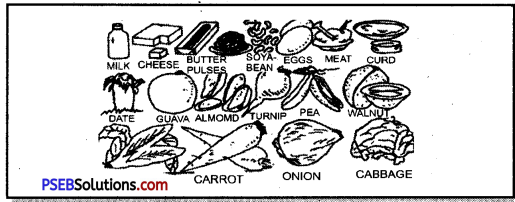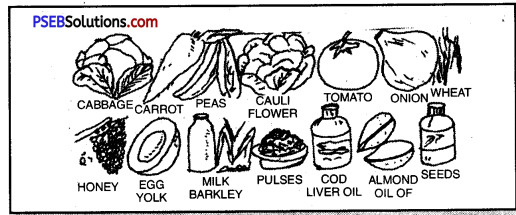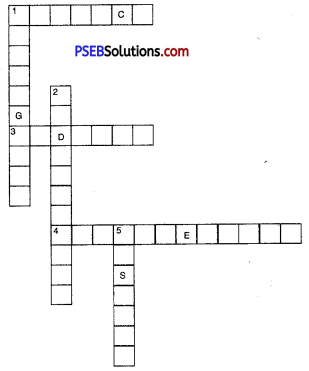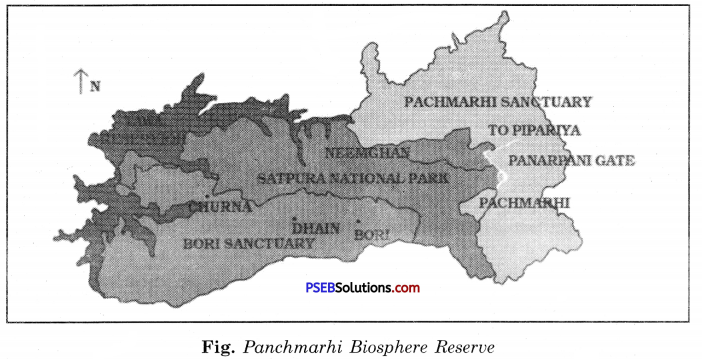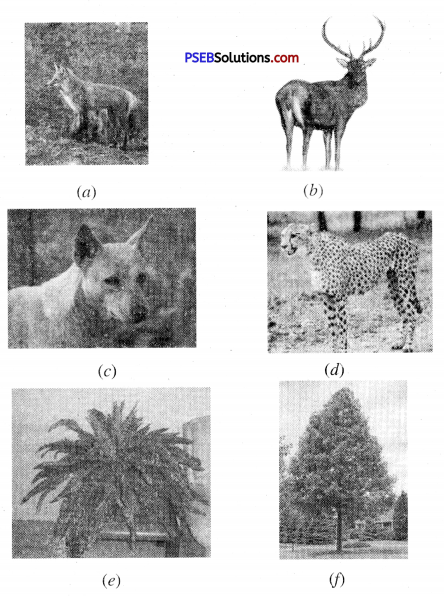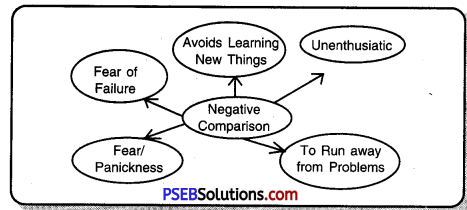Punjab State Board PSEB 12th Class Sociology Important Questions Chapter 9 Social Movements Important Questions and Answers.
PSEB 12th Class Sociology Important Questions Chapter 9 Social Movements
Multiple Choice Questions:
1. The movement which aims to remove social evils is known as
(a) Reform movement
(b) Revivalist movement
(c) Revolutionary movement
(d) None of these
Answer:
(a) Reform movement
2. Who played an important role in the Chipko movement?
(a) Chandi Prasad Bhatt
(b) Lai Bahadur Shastri
(c) Medha Patkar
(d) Arundhati Roy
Answer:
(a) Chandi Prasad Bhatt
![]()
3. Who was awarded ‘Padma Vibhushan’ for his contribution to the Chipko movement?
(a) Medha Patkar
(b) Sunder Lai Bahuguna
(c) Chandi Prasad Bhatt
(d) Raja Ram Mohan Roy
Answer:
(b) Sunder Lai Bahuguna
4. Who started Satya Shodhak Movement?
(a) Joti Rao Phule
(b) Ishwar Chandra Vidyasagar
(c) Raja Ram Mohan Roy
(d) Dr.B.R. Ambedkar
Answer:
(a) Joti Rao Phule
5. Who started Mahar Movement?
(a) Joti Rao Phule
(b) Dr. B.R. *Ambedkar
(c) Raja Ram Mohan Roy
(d) Sunder Lai Bahuguna.
Answer:
(b)Dr. B.R. Ambedkar
6. With whose efforts, Sati Pratha was declared illegal?
(a) Raja Ram Mohan Roy
(b) Dr. Ambedkar
(c) Joti Rao Phule
(d) Ishwar Chandra Vidyasagar
Answer:
(a) Raja Ram Mohan Roy
Fill in the Blanks:
1. Dr, Ambedkar belonged to …………… caste.
Answer:
Mahar
2. Satya Shodhak Samaj was established in …………………. A.D.
Answer:
1873
3. ………………….. started Self Respect Movement.
Answer:
Periyar Ramaswami
4. Sree Narayan Guru belonged to ………………. caste.
Answer:
Izava
5. Majdoor Mahajan Sabha was started by ………………..
Answer:
Mahatma Gandhi
![]()
True/False:
1. Dr. Ambedkar adopted Jainism.
Answer:
False
2. Periyar Ramaswami started Self Respect Movement in Kerala.
Answer:
False
3. Satya Shodhak Samaj was started in Maharashtra.
Answer:
True
4. All India trade Union congress was started in 1920 A.D.
Answer:
True
5. Kisan Sahha was started in 1930 A.D.
Answer:
True
6. Brahmo Samaj was started by Raja Ram Mohan Roy.
Answer:
True
One Word/One Line Questions Answers:
Question 1.
Who is known as the father of modern India?
Answer:
Raja Ram Mohan Roy is known as the father of modern India.
Question 2.
When and who used the word social movement the first time?
Answer:
German Scholar Lorenz Van Stein was the one who used this term in 1850 A.D. in his book ‘History of the French Social Movement from 1789 to the Present’. Question 3. When did the French and Russian revolutions take place?
Answer:
The French revolution took place in 1789 A.D. and the Russian revolution took place in 1917 A.D.
Question 4.
Give one necessary element of social movement.
Answer:
Collective consciousness is one of the necessary element of social movement.
Question 5.
What is the main objective of social movement?
Answer:
Main objective of social movement is to replace the old system by establishing new system.
Question 6.
Which movement brings sudden change in society?
Answer:
Revolutionary movement brings sudden change in society.
Question 7.
When and who started Satya Shodhak Samaj?
Answer:
Jyoti Rao Phule started Satya Shodhak in 1873 A.D.
![]()
Question 8.
What was the major issue of Satya Shodhak Samaj?
Answer:
Major issue of Satya Shddhak Samaj was to end every type of authority of Brahmins.
Question 9.
When, where and who started Sree Narayan Dharam Paripalan movement?
Answer:
This movement was started by Sree Narayan Guru in 1895 A.D. in Kerala.
Question 10.
Why was Sree Narayan Dharam Paripalan Movement started?
Answer:
To uplift the social status of Izava caste and to remove the evil like untouchability.
Question 11.
When, where and who started Self Respect Movement?
Answer:
Self Respect Movement was started by Periyar E.V. Ramaswami in 1925 A.D. in Tamil Nadu.
Question 12.
What was the major objective of Self Respect Movement?
Answer:
To arose the sense of self respect among backward castes in caste based society.
Question 13.
When and which religion was adopted by Dr. Ambedkar?
Answer:
Dr. Ambedkar adopted Buddhism in 1956 A.D.
Question 14.
What is included in class based movements?
Answer:
Worker’s movement and Peasant’s movement are included in class based movements.
Question 15. Who established Mazdoor Mahajan Sangh?
Answer:
Mazdoor Mahajan Singh was established by Mahatma Gandhi.
Question 16.
When and where was All India Trade Union Congress established?
Answer:
It was established at Bombay in 1920 and Lala Lajpat Rai was its first President.
Question 17.
Where did Indigo rebellion take place in 1866-68?
Answer:
In 1866-68, Indigo rebellion take place in Darbhanga and Champaran.
Question 18.
Where were Peasant movements started?
Answer:
Peasant movements were mainly started in Punjab.
Question 19.
Who helped in removing Sati Pratha from society?
Answer:
Raja Ram Mohan Roy with the help of Lord William Bentick helped in removing Sati Pratha from society.
Question 20.
When was SEWA Bank started?
Answer:
SEWA Bank was started in 1974 A.D.
Question 21.
When and where was Chipko Movement started?
Answer:
Chipko movement was started in 1973 A.D. in the Garhwal region of Uttrakhand.
Question 22.
Who were the major leaders of Chipko movement?
Answer:
Major leaders of Chipko movement were Cha’ndi Prasad Bhatt, Gaura Devi and Sunder Lai Bahuguna.
Question 23.
When and where was Appiko movement started?
Answer:
Appiko movement was started in 1973 in Karnataka.
Question 24.
Why was Narmada Bachao movement started?
Answer:
It was started in Gujarat to save environment and to place the displaced persons.
![]()
Very Short Answer Type Questions:
Question 1.
What are social movements?
Or
Social Movement.
Answer:
There are certain unnecessary conditions in society which are going on from the ages. Under these circumstances, few people collectively try to change the social system. Such collective efforts are known as social movements.
Question 2.
Give two features of social movements.
Answer:
- Collective consciousness is the major feature of social movements. The sense of unity motivates the people to take part in it.
- Social movement runs with an ideology. Without definite ideology, movement cannot start.
Question 3.
Satya Shodhak Movement.
Answer:
This was a non-Brahmin movement started by Jyotiba Phule through Satya Shodhak Samaj. He was of the view that according to traditions, Brahmins have established authority. Such authority should be removed and lower castes should be uplifted.
Question 4.
Sree Narayan Dharam Paripalan movement.
Answer:
This movement was started by Sree Narayan Guru in Kerala. He himself belonged to Izava community which was considered a lower caste. He wanted to eliminate untouchability and to establish such temples which are open for all.
Question 5.
Self-Respect Movement.
Answer:
This movement was started in 1925 by Periyar Ramaswamy in Tamilnadu-. Major objective of this movement was to uplift lower castes and to arose self respect for them. He started this movement against the social theory of Dharma and Karma.
Question 6.
Mahar Caste.
Answer:
Mahar Caste was a lower caste of Maharashtra. Before adopting Buddhism, it was one of the major part of Maharashtra’s population. Their socio-economic status was quite low. They lived separately in Maharashtra and it was considered that their touch will impure others. They did menial jobs.
Question 7.
Indigo movement.
Answer:
Indigo movement was mainly started in Darbha’nga and Champaran districts of Bihar because the British greatly exploited the Indigo planters. They were forced to grow indigo and sell it at cheap rates. Planters were fed up with this exploitation and they started these movements.
Question 8.
Brahmo Samaj.
Answer:
Brahmo Samaj was started in 1828 by Raja Ram Mohan Roy at Calcutta. It was greatly influenced by the western ideas. It did a lot against Sati system and that’s why the British government declared it illegal. It also gave stress on women education and right of property for women.
Question 9.
Environment movement.
Answer:
To save our environment from getting polluted, many reform movements were initiated in our country. Many people participated in these and saved the environment. Chipko movement, Appiko movement, Narmada Bachao Andolan are few of its examples.
![]()
Short Answer Type Questions:
Question 1.
Which changes could be brought with the help of socio-reform movements?
Answer:
India is a welfare state in which every one gets equal opportunity. The main objective of welfare state is to make life of the people happy. But this could be possible if all the existing beliefs and evils of society could be removed. Only socio¬reform movements can remove them. But nothing can be obtained only by making law. For this reforms are necessary in society. For example, laws are there for child marriage, dowry system, child labour etc., but these things are common in our country. All these things are obstacles in our country. If we want to develop our society then socio-reform movements are very much necessary. That’s why socio-reform movements are necessary to bring changes in society.
Question 2.
Give four features of social movements.
Answer:
- Social movements are always anti-social.
- Social movements are always planned and deliberate efforts.
- Their main objective is to bring reforms in society.
- Collective efforts are required in it because one person cannot bring changes in society.
Question 3.
What is the nature of social movements?
Answer:
- Social movements are not institutions because institutions are permanent and traditional and are considered a necessary aspect of the culture. These movements come to an end themselves after the achievement of their objective.
- Social movements are not associations as well because associations have their own constitutions. This movement is generally informal, unorganised and is against traditions.
- Social movements are neither pressure or sectional groups because these movements demand the changes in social norms.
Question 4.
Explain the stages of social movement.
Answer:
- At the first stage, there is discontentment, among the people. Without discontentment, movement cannot start. Dissatisfaction is the major cause of concern at first stage.
- The second stage is also known as the popular stage and people’s dissatisfaction leads to collective mobilisation. The leader promises with them to remove their problems.
- Third stage is known as formalisation stage. The organisation of movement clarifies its ideology and if it is accepted, the collective action takes place. It leads to the beginning of movement.
- The fourth stage is of institutionalisation when the movement becomes crystallised. The goal of the movement is accepted in that society.
- Fifth stage is the dissolution of the movement. Sometimes, after the attainment of objectives, movement itself comes to an end or sometimes the movement itself fades away.
Question 5.
Satya Shodhak Movement.
Answer:
Satya Shodhak movement was a non—Brahmin movement. It was represented by Satya Shodhak Samaj which was started by Jyoti Rao Phule in 1873 A.D. Jyoti Rao phule belonged to Phul Mali caste. Most of the members of this caste were gardners who cultivated flowers, fruits and vegetables. Phule and his associates were of the view that the people of Maharashtra are divided in two ways. On one side there are Brahmins and people of lower castes are on the other side. Brahmins ieployed their traditional religions authority and newly acquired powers as officials marriage, dowry system, child labour etc., but these things are common in our country. All these things are obstacles in our country. If we want to develop our society then socio-reform movements are very much necessary. That’s why socio-reform movements are necessary to bring changes in society.
Question 2.
Give four features of social movements.
Answer:
- Social movements are always anti social.
- Social movements are always planned and deliberate efforts.
- Their main objective is to bring reforms in society.
- Collective efforts are required in it because one person cannot bring changes in society.
Question 3.
What is the nature of social movements?
Answer:
- Social movements are not institutions because institutions are permanent and traditional and are considered a necessary aspect of the culture. These movements come to an end themselves after the. achievement of their objective.
- Social movements pre not associations as well because associations have their own constitutions. This movement is generally informal, unorganised and is against traditions.
- Social movements are neither pressure or sectional groups because these movements demand the changes in social norms.
Question 4.
Explain the stages of social movement.
Answer:
- At the first stage, there is discontentment among the people. Without discontentment, movement cannot start. Dissatisfaction is the major cause of concern at first stage.
- The second stage is also known as the popular stage and people’s dissatisfaction leads to collective mobilisation. The leader promises with them to remove’their problems.
- Third stage is known as formalisation stage. The organisation of movement clarifies its ideology and if it is accepted, the collective action takes place. It leads to the beginning of movement.
- The fourth stage is of institutionalisation when the movement becomes crystallised. The goal of the movement is accepted in that society.
- Fifth stage is the dissolution of the movement. Sometimes, after the attainment of objectives, movement itself comes to an end or sometimes the movement itself fades away.
Question 5.
Satya Shodhak Movement.
Answer:
Satya Shodhak movement was a non-Brahmin movement. It was represented by Satya Shodhak Samaj which was started by Jyoti Rao Phule in 1873 A.D. Jyoti Rao phule belonged to Phul Mali caste. Most of the members of this caste were gardners who cultivated flowers, fruits and vegetables. Phule and his associates were of the view that the people of Maharashtra are divided in two ways. On one side there are Brahmins and people of lower castes are on the other side. Brahmins deployed their traditional religions authority and newly acquired powers as officials under the British rule enforce this divide. The ideology of this movement was based on the idea that every type of Brahmin’s authority should be removed. This is the most important condition for the upliftment of lower castes.
Question 6.
Sree Narayan Dharam Paripalan Movement.
Answer:
Sree Narayan Dharam Paripalan movement was started in 1895. by Sree Narayan Guru in Kerala. He himself belonged to Izava community which was considered impure caste. Izava people were not allowed to do idol worship and animal sacrifice. Two main points were centered in this movement. First one was the end of untouchability and the second was the establishment of such temples which could be open for all. He also tried to change and simplify the rules related to marriage, religious customs and last rites. He even gave a new slogan, “One God and one religion for all mankind.”
![]()
Question 7.
Self Respect Movement.
Answer:
In 1925, Periyar E.V. Ramaswami started Self Respect Movement in Tamil Nadu. The objective of this movement was to establish such society in which lower castes should have equal rights. Another objective of this movement was to establish self respect for lower castes in caste based society. This movement proved quite effective in Tamilnadu. Major issue of this movement was to establish socio-economic equality. This movement concentrated on removing social evils on the name of dharam—karam. Periyar also said that this movement must be institutionalised to achieve its objective.
Question 8.
Appiko movement.
Answer:
Chipko movement was started in Garhwal region of Uttrakhand. After getting impressed from this, farmers of a district in Karnataka started the same type of movement. In south India, it was known as Appiko movement. In the local language of Karnataka, hugging is known as Appiko. In September 1983, people of Salkani region under the leadership of Pandurang Hegde hugged the. trees of Kalsa forest. It spread everywhere in south India. To make aware to the people, many methods were adopted such as folk dances, street plays etc. This movement got success when state government restricted cutting green trees. Only dry trees were allowed to cut to fulfil local needs.
Long Answer Type Questions:
Question 1. Explain the women’s movements in India.
Or
What do you understand by Women’s movement? Discuss any two movements.
Answer:
Women’s Movement. There exist many women oriented social evils in Indian society right from the ages. That’s why many women’s organisation came into being at national and local level in early 20th century. The Women’s India Association (WIA) (1917), All India Women’s Conference (AIWC) (1926), National Council for Women in India (NCWI) (1925) are worth mentioning. Some of them started with a limited scope but their scope widened over the time. For example, the AIWC started with an idea of ‘Women Welfare’ and ‘Politics’ but few years later its President stated that,“Can the Indian man or woman be free if India be a slave? How can we remain dumb about national freedom, the very basis of all great reforms?” It can be argued that this period of activity did not constitute a social movement. It can be argued otherwise too.
It is generally throught that only middle class educated woman are involved in social movements. But we should keep in mind the women’s participation in freedom struggle. They participated along with men in tribal revolts and struggles in rural areas during colonial times. We can take examples of the Tebhaga movement in Bengal, the Teleangana arms struggle from the erstwhile Nizam’s rule and the Warli tribals revolt against bondage in Maharashtra.
One issue which is generally raised is that if there was an active women’s movement before 1947, what happened after 1947. One explanation can be given that many women who were involved in national movement got involved in the national building task. Some give the reason that trauma of Partition is responsible for it. In the mid 1970’s women’s movement again started in India. Some call it the second phase of women’s movement in India. But some are of the view that nature of both the movements is different. After independence there was a growth of autonomous women’s movements. It means they were independent from political parties. It was felt that political parties always try to marginalise issues of women.
Except the organisational changes and change in nature, new issues were focussed in new movement like violence against women. Many campaigns were initiated, over the years, against this evil. That’s why these days forms of children – having columns of both names of father and mother. Other important legal changes have also taken place because of campaign by women’s movement. Issues of employment, land rights have been fought alongside rights against dowry and sexual harassment.
Question 2.
Environmental movements often also contain economic and identity issues. Discuss.
Answer:
The Modern period has greatly emphasised the issue of development. From many decades people are concerned about uncontrolled use of natural resources and a model of development which creates new needs. It further demands more exploitations of already depleted natural resources. This model of development has also been criticised because it has been assumed that all the sections of society are benefited from this development. So big dams displaced the people from their livelihood and homes. The impact of industrial pollution is another story. Here we can take example of an ecological movement in which many issues are interlinked.
The Chipko movement, in the foothills of Himalayas, is an example of interlinked issues. Ramachandra Guha wrote in his book, ‘Unquiet Woods’, that villagers rallied together to save the Rhododendron and Oak forests near their villages. When government contractors came to cut down the trees, all the villagers stepped forward and hugged the trees to prevent them for being axed. Villagers’ subsistence was also at stake. All of them were dependent on forests to get firewood, fodder and things of daily needs. That’s why villagers stood against government’s desire to generate revenues by selling timber.
The economy of subsistence stood against the economy of profit. Along side the issue of social inequality, the Chipko movement also raised the issue of ecological problem. Cutting down of forests could have led to ecological destruction which could have resulted in devastating floods and landslides in the region. These red and green issues were interlinked for the villagers. As their survival was dependent upon forests, they also valued the forests for their own sake because ecological wealth benefits everyone. Moreover this movement also showed people’s anger, living in hill villages, against a distant government, in plains, which seemed indifferent and hostile to their concerns. So concerns of economy, ecology and political representation were important in Chipko movement.

